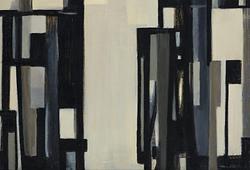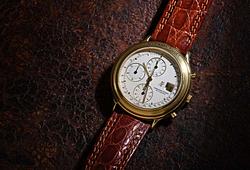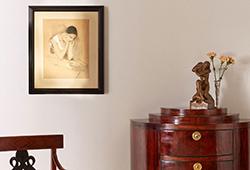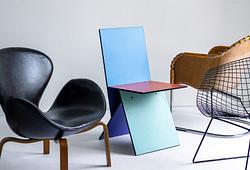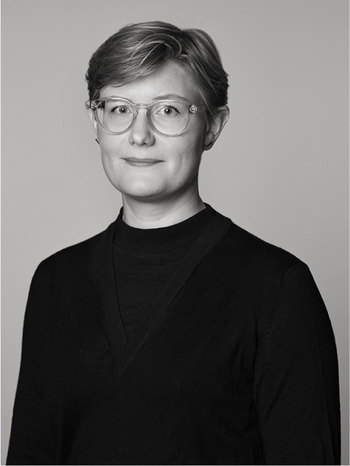Gunnar Cyrén
a 47 piece 'Nobel', 'Rainbow' and 'Aida' glass service, Orrefors, Sweden.
Handpainted decor with gilt and polychrome colours. 'Rainbow' and 'devil glasses' signed 'GC' and with different painters' signatures.
'Nobel' comprising:
11 wine glasses (height 18 cm)
6 wine glasses (height 14 cm)
9 shot glasses, 'devil's glasses' (height 16.5 cm)
'Rainbow' comprising:
14 wine glasses (height 18.5 cm)
'Aida' comprising:
7 wine glasses (19 cm)
Provenance
Lars Wetterling Collection.
More information
"What does the devil look like? A devil? What then? It would be best if you saw a living thing. The result was a black, hairy figure squatting." This is how Gunnar Cyrén himself described how the 'Devil' glasses in the Nobel tableware got its shape. The first glass, the black one, came out in 1996. Originally, only seven glasses would be included in the series, a male devil and six female devils. By the Nobel Prize's 100th anniversary, a dark green glass in a limited edition was introduced and in 2008 it was decided that a new colour would come out every year and that would only be produced during the current year. In order for the series to continue to contain seven glasses, the purple glass was based on the standard set. Since then, a new colour has been released every year until 2018 when the last glass in the series was released, this last one in brown metallic.
The 'Nobel' service was designed in 1991 by Gunnar Cyrén to celebrate the Nobel Prize's 90th anniversary. The hand-painted glass service is part of the world-famous Nobel tableware.
'Rainbow' was designed in collaboration with Gunnar Cyrén and Arne Blom AB, Gävle, Sweden, in 2001. The wine glasses was made in six different colour combinations and with a decanter.
'Aida' was designed by Gunnar Cyrén for Orrefors centenary in 1998. The cup was blown and the base pressed.
Designer
Gunnar Cyrén (1931-2013) was a Swedish glass artist, silversmith and industrial designer. He worked for Orrefors glassworks between 1959 and 1970, then designed plastics for a few years and then returned to Orrefors in 1977. Highlights of his design career include "Pop glass" or "Cups with colored legs" (1966-1968) and "The Nobel Service" (1991). Over the years, Gunnar Cyrén has participated in several exhibitions in Sweden and abroad and received the King's scholarship in 1962, the Lunning prize in 1966 and the Prince Eugén medal in 1988. He is appointed professor by the government. In his hometown of Gävle, where he also had a gallery and a gold and silver smithy, he has been honored with his own room at the County Museum.
Read more





